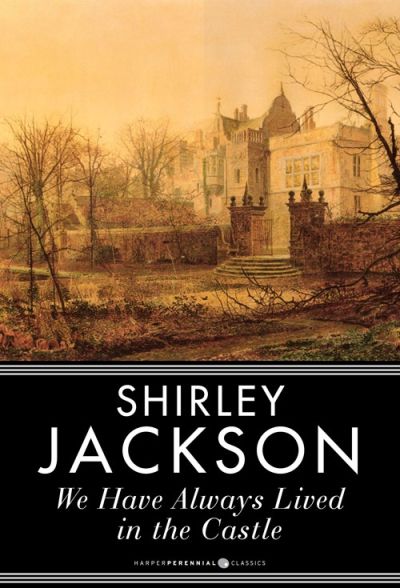Two Different Faces
We Have Always Lived in the Castle
By Shirley Jackson

18 Oct, 2018
0 comments
Shirley Jackson’s 1962 We Have Always Lived in the Castle was published three years before her death. It was the last novel she published.
Mary Katherine “Merricat” Blackwood lives on the vast Blackwood estate with her older sister Constance, her ailing uncle Julian, and Jonas the cat. She seldom sees other people, but that doesn’t bother her. Her periodic encounters with the people of the nearby village have convinced her that people are for the most part unpleasant, troublesome, and best avoided.
The villagers would claim they have good reason to distrust and dislike the Blackwoods. Not only is the family standoffish, and not only did the late Mr. Blackwood fence off the estate to keep lesser people from using it as a short-cut, the townsfolk are utterly convinced that Constance got away with murder.
A jury of her peers found Constance innocent of dosing the family sugar bowl with arsenic. Uncle Julian, who only narrowly survived the mass poisoning, seems convinced of Constance’s innocence. He has devoted his declining years to documenting the horrific murder of his brother, his brother’s wife, and their son. His rambling text has never been finished. Even if it were finished and published, it would be unlikely to convince those sure that Constance was guilty.
The trauma of the trial has left Constance housebound, so it falls to the antisocial Merricat to make occasional forays into the village for supplies. These trips are invariably unpleasant, as the townsfolk make no effort to hide their open dislike of the Blackwoods. Merricat solaces herself by imagining how she would murder the villagers, if she could. But Constance would disapprove if Merricat were to slaughter their neighbours. Merricat must settle for fantasy.
A firm believer in the efficacity of spells, Merricat has worked for years to hold the world at bay with a barrier composed of carefully distributed icons. The magic fails her the day that cousin Charles comes to visit. Recently orphaned, left penniless by his improvident father, Charles is sure that his presence is just what the family needs. Or so he says. The author makes it clear that his motives are not at all benevolent. He sees the senile old man and the helpless women as easy marks.
Of course, it is likely that at least one of his targets is a ruthless killer.
~oOo~
It’s not at all clear why the villagers loath the Blackwoods so. Stopped-up footpath and a mass murder … could happen in any family. Merricat might want to decorate her fence with heads on spikes, but it’s not as if she mentions this to the villagers. The townsfolk’s churlish behavior is not a strong argument for small-town life.
Not that anyone else in the novel is all that appealing. Julian senile, Constance ineffectual, Merricat murderous, and of course, Charles. He plans to reward hospitality (however grudging) with betrayal. He reminded me of the loathsome Luke Sanderson from Jackson’s The Haunting of Hill House. He’s the scion of a (once) great family, the sort of person who barges through life convinced that he is alone is the protagonist and hence entitled to whatever he wants.
There are other parallels between Jackson’s two best-known books. Haunting’s Crain family and Castle’s Blackwoods both live in isolated mansions; both are composed of colourful eccentrics. They differ in that the Crains specialize in eldritch horror, whereas the Blackwoods are merely snobbish and mildly homicidal. If one had to live next to one or the other, it would be wise to choose the Blackwoods. Just don’t eat any snacks they offer you.
This is a classic tale of a close-knit family and the unpleasant people who surround them. Eerie, gripping, it well deserves its status as a horror classic.
We Have Always Lived in the Castle is available here (Amazon) and here (Chapters-Indigo).
